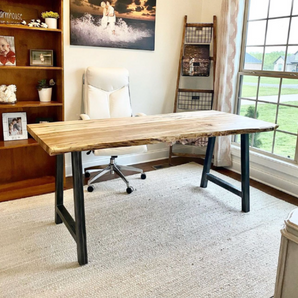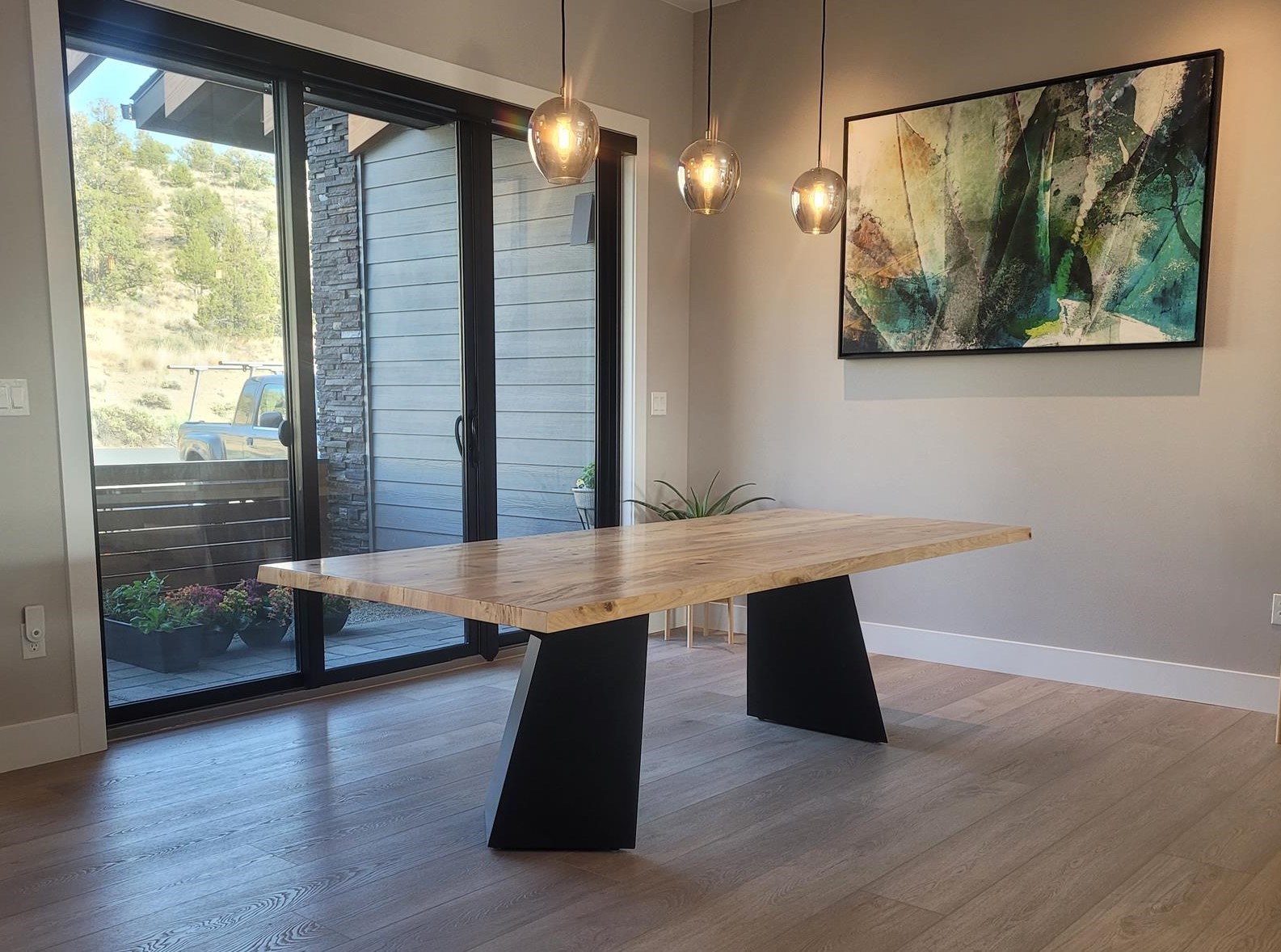The Ultimate Guide to Choose Resilient Dining Room Table Legs
The Ultimate Guide to Choose Resilient Dining Room Table Legs
Blog Article
Picking the Perfect Table: What Styles Job Best for Your Home?
Choosing the excellent eating table for your home can be a nuanced process that stabilizes aesthetic appeals and functionality. Whether your area leans in the direction of typical elegance, modern minimalism, rustic charm, or industrial stylish, the range of styles readily available can satisfy diverse preferences. Each style uses special benefits and obstacles that can either improve or disrupt your dining location's harmony. Recognizing exactly how different materials, shapes, and sizes engage with your existing decor is essential. To navigate these selections efficiently and find a table that truly matches your home, take into consideration the complying with facets thoroughly.
Examining Your Area
Evaluating the measurements and format of your eating area is a critical first step in choosing the excellent eating table. Begin by determining the length and width of the room, accounting for doorways, windows, and other architectural features that could affect table placement. This makes certain that your table not only fits but likewise permits comfy activity around it.
Consider the number of people you usually amuse. A table should fit your house's everyday demands while using sufficient flexibility for periodic guests. As a regulation of thumb, assign at the very least 24 inches of table width per individual to make certain a comfortable eating experience.
It's likewise vital to preserve suitable clearance around the table. Preferably, there need to go to least 36 inches between the table side and walls or other furnishings, allowing easy gain access to and movement. For spaces where chairs with arms or extra storage units like buffets are included, raising this clearance to 48 inches is advisable.
Illumination and atmosphere play significant roles also. Ensure that your table lines up with existing illumination components or prepare for ample lights solutions. This detailed spatial evaluation assurances that your dining table not just fits physically yet also integrates with your room's general functionality and aesthetic.
Popular Table Styles

Standard table usually include elaborate details, rounded legs, and rich wood coatings, stimulating a sense of ageless beauty. They are excellent for homes with traditional decor or those looking to add a touch of class to their dining location.
Modern eating tables focus on simplicity and clean lines, usually integrating materials like glass and metal. These tables are suitable for contemporary areas, giving a smooth and minimalist appearance that complements minimal style viewpoints.
Rustic table, on the other hand, emphasize natural materials and a handmade look - dining room table legs. They usually feature reclaimed wood and a distressed surface, producing a cozy and inviting ambience. These tables function well in farmhouse-style homes or those seeking a relaxing, organic feel
Industrial dining tables combine raw products such as steel and timber, often showcasing a practical visual. This style is well-suited for lofts or city rooms, including a touch of sturdy appeal and resilience to the directory eating experience.
Each design offers unique benefits, making it necessary to pick one that lines up with your home's overall layout and your personal preferences.
Material Choices
When selecting a table, the selection of material plays a crucial duty in establishing both the table's appearances and functionality. Timber, steel, glass, and composite materials each offer special benefits and obstacles, making it essential to line up the product with your home's design and way of life needs.
Timber is a timeless and functional choice, readily available in ranges such as oak, walnut, and mahogany. Known for its toughness and heat, wood complements both conventional and contemporary insides. Nonetheless, it calls for normal maintenance to stop scratches and warping.
Metal tables, commonly crafted from stainless steel, light weight aluminum, or wrought iron, are applauded for their modern charm and effectiveness. They are particularly suited for industrial or minimal settings but can be prone to dents and might feel chilly to the touch.
Glass dining tables bring an air of sophistication and visibility, perfect for smaller sized rooms as they create an illusion of more space. While very easy to tidy, glass can be at risk to smudges and requires careful managing to stay clear of chips and splits.
Composite products, such as MDF and plywood, offer economical and adjustable services, though they may do not have the longevity of all-natural materials. Picking the right product guarantees your dining table is both a practical property and an aesthetic delight.
Shape and Size Factors To Consider
After figuring out the proper material for your table, the following factor to consider is picking the appropriate sizes and shape to match your space. The form of the table dramatically affects the area's aesthetic and functionality. Rectangle-shaped tables, one of the most usual form, are ideal for larger rooms and can accommodate a higher variety of guests. They also enable an extra official dining experience. Alternatively, rounded tables foster a sense of affection and are exceptional for smaller sized dining areas, urging discussion by removing edges and making everyone feel equally consisted of.
Dimension is equally crucial and ought to be determined by both the area's dimensions and browse around these guys the variety of people you intend to seat routinely. As a rule of thumb, designate a minimum of 24 inches of table width per individual to make certain comfortable dining. Additionally, think about the table's clearance space: there must be at the very least 36 inches between the table edge and the walls or various other furniture. This makes certain that diners can move around easily without feeling confined. Prolonging tables supply versatility if you frequently host bigger events, giving extra seats when needed without occupying added room daily. Selecting the appropriate form and dimension makes sure both functionality and aesthetic consistency in your eating area.
Matching Your Decor
Picking a dining table that integrates with your existing style is essential in developing a cohesive and inviting space. Begin by evaluating your present interior decoration style, whether it be contemporary, traditional, rustic, or diverse. The eating table ought to enhance the general aesthetic, not contend with it. As an example, a streamlined, minimalist table with clean lines is excellent for a contemporary home, while a vintage, ornate table fits a more standard setting.
Color and material are just as significant. If your design includes cozy tones and natural products, consider a wooden table to improve the natural feeling. Conversely, a glass or metal table may be better in a room controlled by awesome colors and commercial components. Focus on the finish, as it ought to mirror other furnishings and fixtures to why not check here maintain harmony.
A rough-hewn, redeemed timber table can add personality to a rustic area, while a polished marble surface can elevate an elegant eating location. A well-matched dining table not just improves visual allure however also enhances the overall eating experience.

Final Thought
Picking the ideal eating table demands mindful factor to consider of area, design, products, form, and dimension. Conventional tables complement classic interiors with abundant timber surfaces, while contemporary tables fit modern settings through glass and steel.
Report this page